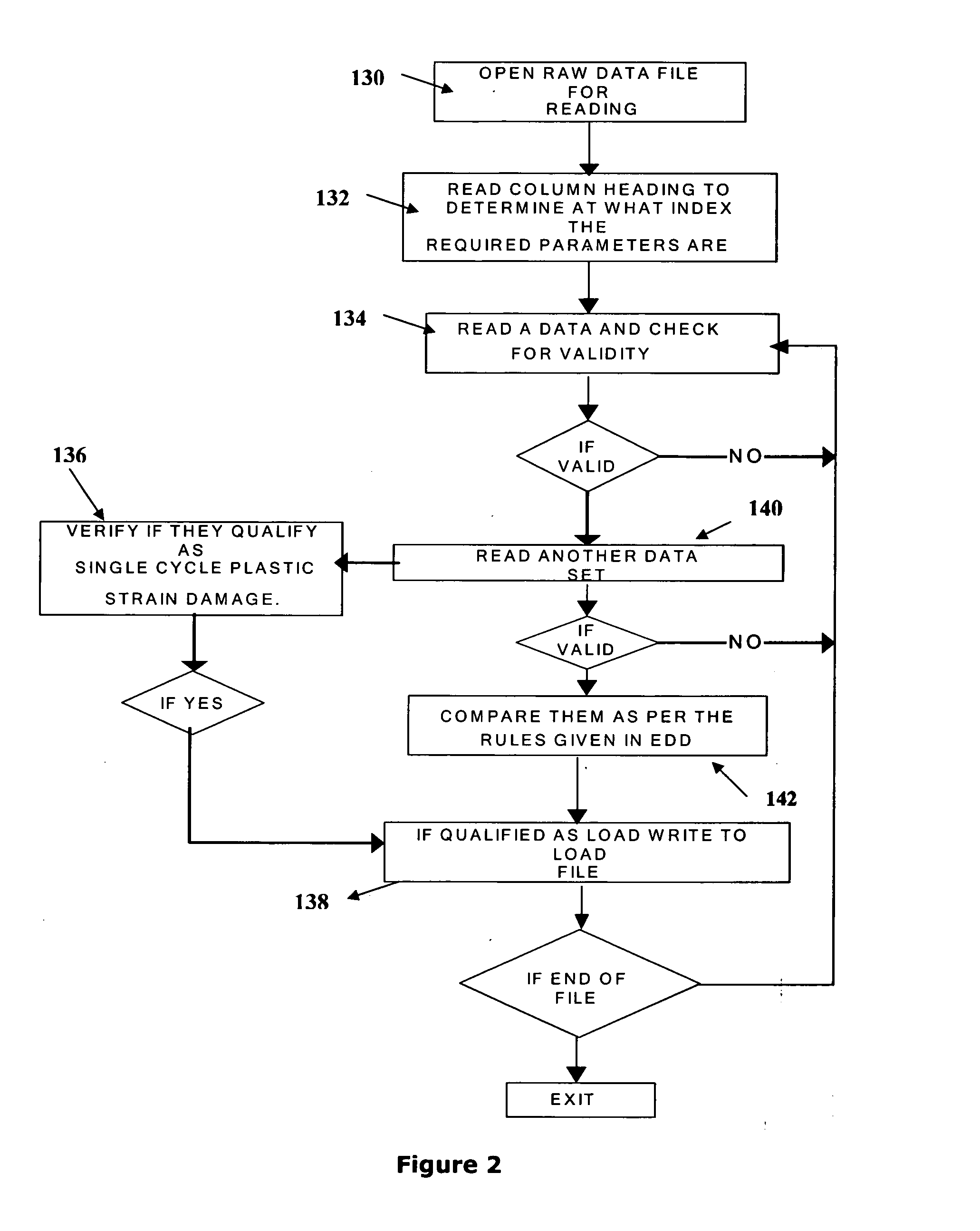Method and system for real-time prognosis analysis and usage based residual life assessment of turbine engine components and display
a technology of turbine engine and prognosis analysis, applied in the field of real-time prognosis analysis and usage based residual life assessment of turbine engine components and display, can solve the problems of reducing the power output of a given fuel burn, surface damage of turbine parts, and loss of aerodynamic and thermal efficiency, so as to facilitate proactive repair and overhaul decisions, the effect of reducing the cost of ownership of the engin
- Summary
- Abstract
- Description
- Claims
- Application Information
AI Technical Summary
Benefits of technology
Problems solved by technology
Method used
Image
Examples
Embodiment Construction
[0072]FIG. 1 illustrates a computer-based prognostics system consisting of three main parts: input interface 100, prognostics processor 110 and output interface 120 which are synchronized through a software architecture. In the part 100, the input interface has a finite element component model 102, in-service operating data 104 (temperature, pressure, rpm, etc.), from pre-existing sensors and signal processing modules installed in the machinery under investigation; and material properties data 106. The prognostics processor 110 consists of a mission profile analyzer module 111, a combustor modeling module 112, off-design engine analysis module 113, thermodynamic modeling module 114, non-linear finite element analysis module 115, and a microstructure-based damage analysis module 116. The flow of information between these modules is explained in more detail in FIG. 17.
[0073]The output interface 120 consists of distortion and cracking data 122, crack behaviour data 144, surface conditi...
PUM
 Login to View More
Login to View More Abstract
Description
Claims
Application Information
 Login to View More
Login to View More - R&D
- Intellectual Property
- Life Sciences
- Materials
- Tech Scout
- Unparalleled Data Quality
- Higher Quality Content
- 60% Fewer Hallucinations
Browse by: Latest US Patents, China's latest patents, Technical Efficacy Thesaurus, Application Domain, Technology Topic, Popular Technical Reports.
© 2025 PatSnap. All rights reserved.Legal|Privacy policy|Modern Slavery Act Transparency Statement|Sitemap|About US| Contact US: help@patsnap.com



